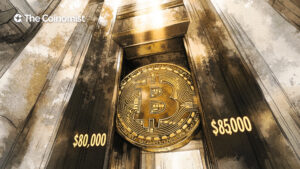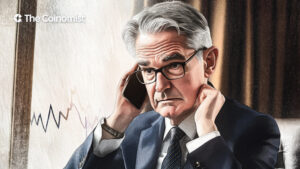Bitcoin’s Largest Drop Since August: What’s Next?
Andre Dragosch, director and head of research Europe at Bitwise warns that Bitcoin could face further declines in the coming weeks due to U.S. Federal Reserve policies. Despite this, he sees the price drop as a prime opportunity to accumulate BTC, citing its scarcity.
Andre Dragosch, director and head of research Europe at Bitwise warns that Bitcoin could face further declines in the coming weeks due to U.S. Federal Reserve policies. Despite this, he sees the price drop as a prime opportunity to accumulate BTC, citing its scarcity.
Bitcoin (BTC), the world’s largest cryptocurrency by market capitalization, dropped 8.8% last week, reaching $95,000. This marked the most significant correction since August 2024. However, the decline may not be over yet.
Andre Dragosch of Bitwise, once strongly bullish on Bitcoin, has now taken a more cautious stance.
In an interview with CoinDesk, he remarked:
The big macro picture is that the Fed is stuck between a rock and a hard place as financial conditions have continued to tighten despite 3 consecutive rate cuts since September. Meanwhile, real-time measures of consumer price inflation have re-accelerated over the past months to new highs as well judging by truflation‘s indicator for U.S. inflation.
Dragosch observed that current market conditions could pose additional challenges.
So, it’s quite likely that we will see more pain in the coming weeks, but this could be an interesting buying opportunity given the ongoing tailwinds provided by the BTC supply deficit,
he said.
The rising yields on Treasury bonds and a strengthening U.S. dollar are adding pressure to the cryptocurrency market. Higher yields increase borrowing costs and make stable assets more attractive compared to riskier investments like cryptocurrencies.
Andre Dragosch, director and head of research Europe at Bitwise. Source: Medium
Is the U.S. Economy Heading Toward 1970s-Style Inflation?
Some analysts are comparing the current economic environment to the inflationary period of the 1970s, when the second wave of inflation was significantly stronger than the first.
Dragosch noted that recent inflation data has raised concerns at the Federal Reserve about the possibility of a similar scenario repeating.
They are probably scared of the double hump scenario and a revival of the 70s twin peak in inflation which is why they are probably too reluctant to cut rates more aggressively,
Dragosch said.
They risk a significant acceleration in inflation if they cut rates aggressively, if they do little, the economy may suffer.
Nevertheless, Dragosch believes that tightening financial conditions will eventually compel the Federal Reserve to take necessary measures. He also stressed that Bitcoin’s strictly limited supply remains a key factor driving its long-term growth.
It’s worth recalling that Dragosch was among the few to accurately predict Bitcoin’s significant rally in late July, when BTC was trading around $50,000. Recently, Bitcoin made history by surpassing the $100,000 mark for the first time.
The content on The Coinomist is for informational purposes only and should not be interpreted as financial advice. While we strive to provide accurate and up-to-date information, we do not guarantee the accuracy, completeness, or reliability of any content. Neither we accept liability for any errors or omissions in the information provided or for any financial losses incurred as a result of relying on this information. Actions based on this content are at your own risk. Always do your own research and consult a professional. See our Terms, Privacy Policy, and Disclaimers for more details.





















